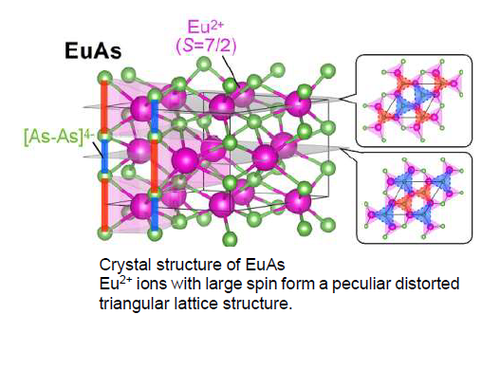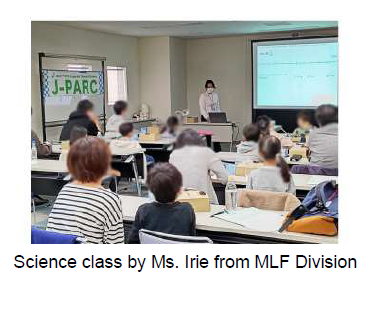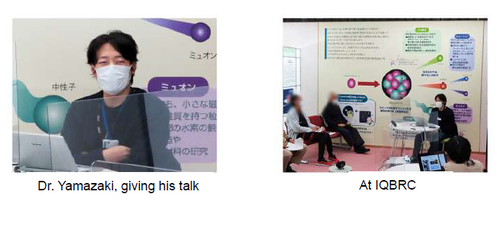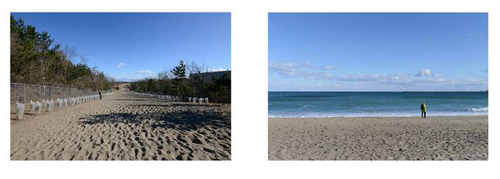J-PARC News January 2022 (Issue #201)
■Message from Director of J-PARC Center
I would like to wish everyone a happy new year. This is Takashi Kobayashi, the Director of J-PARC Center.
I am pleased that last year again, we were able to safely and stably operate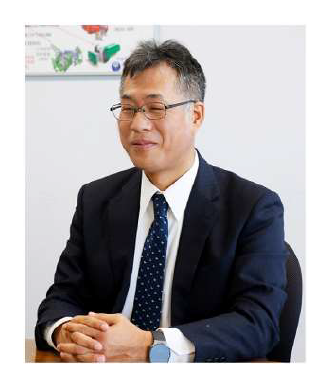 the accelerators and provide the beam to the users thoroughly observing COVID-19 countermeasures. I am truly grateful for your cooperation and efforts. With regard also to efforts to explain the science output from J-PARC to the general populace, while most of the events held last year were on a remote basis or in a hybrid format, many people viewed our online facility open house.
the accelerators and provide the beam to the users thoroughly observing COVID-19 countermeasures. I am truly grateful for your cooperation and efforts. With regard also to efforts to explain the science output from J-PARC to the general populace, while most of the events held last year were on a remote basis or in a hybrid format, many people viewed our online facility open house.
Following a maintenance period from summer 2021, MLF user beam operations will resume in January 2022. The MR accelerator is in the midst of a long-term shutdown for the upgrade. Commissioning of the newly installed devices will start from JFY2022 starting from April 2022, and from fall 2022, we will proceed with increasing power while extracting a beam to our experimental facility.
The mission of J-PARC is to contribute improving the “Quality of Life” of humanity by developing research in a wide range of fields such as elementary particle/nuclear physics and material/life sciences, and to delve into the mysteries of space, materials, and the origins of life. We will continue our efforts to achieve a safer J-PARC, and to improve our safety management to an even further extent.
The development of J-PARC is made possible by the efforts of J-PARC members, users around the world, and the cooperation of all related companies who have been involved. Even under the unclear prospects due to COVID-19 countermeasures and international situations, we would like to recall the mission of J-PARC and sincerely continue to develop researches. I look forward to working with all of you again this year.
January 2022
Takashi Kobayashi, Director, J-PARC Center
■Triangular-Lattice Magnetic Semiconductor Exhibiting Large Magnetic Field Response: Discovery of a Rare "Triple Threat" Magnetic Material (December 23, Press Release)
Magnetic semiconductors are a material combining the properties of semiconductors and magnets. They are expected to be applied to high-functionality electronic devices using both the charge and spin of electrons (magnetic property). Previous research has been limited to magnetic semiconductors with parallel or antiparallel spin configurations, but in recent years, attention has turned to magnetic semiconductors with angles between spins.
Associate Professor Masaki Uchida of Tokyo Institute of Technology and colleagues have focused on europium arsenide (EuAs), in which europium (a rare-earth element) carrying magnetism forms a distinctive triangular lattice. The magnetic structure of this material was investigated by using polarized neutrons in J-PARC's Small and Wide Angle Neutron Scattering Instrument, TAIKAN. Information on the spin configuration was obtained, and by conducting systematic measurements, it was found that EuAs is a rare "triple threat" material needed for achieving a large anomalous Hall effect.: 1) Low carrier density, 2) Strong exchange interaction between conduction carriers and localized spins, and 3) Finite spin chirality (i.e., a configuration with angles between spins). In the Hall effect, a magnetic field is applied perpendicular to a flow of current, and electrons experience the Lorentz force in a direction perpendicular to both the current and magnetic field, giving rise to a voltage difference in that direction. In magnetic materials, there is an additional contribution to the Hall voltage due to interaction with spins, and this is called the anomalous Hall effect, AHE. This research is expected to help realize semiconductor devices using the AHE.
For details, please refer to the following article. http://j-parc.jp/c/en/press-release/2021/12/23000780.html
■Tour of J-PARC for Ibaraki University, KEK Day (December 27)
Twenty students from Ibaraki University's College of Science, College of Engineering, and Graduate School of Science and Engineering visited and toured J-PARC as part of "Ibaraki University, KEK Day" a tour focusing on quantum beam science using state-of-the-art accelerators.
Participants were divided into two groups, and toured the Klystron Gallery in the LINAC Building, the MLF, the Hadron Experimental Facility, and the Neutrino Experimental Facility. Even graduate students majoring in science and engineering rarely have the opportunity to see these facilities first hand. Touring the giant facilities at J-PARC can help students studying theory with pencil and paper see how their studies are physically embodied. We hope that this opportunity will boost many people's interests of J-PARC, accelerators, and experimental facilities using accelerated particles.
■"Fun Science Class for Parents and Children" Held at the Hitachi Civic Center (December 12)
At the Hitachi Civic Center, a fun science class for parents and children was held with the title "What is an Elementary Particle? - A Fascinating Tiny World -" By using tops, elementary school students and their parents learned together about the properties of elementary particles.
J-PARC conducts research on elementary particles, the smallest units of matter. These elementary particles have a property similar to tops. The rotation axis of a spinning top also rotates, and this motion is called "precession." Elementary particles also exhibit precession where the force of a magnet acts.
Eight groups of parents and children participated in the morning session, and seven groups in the afternoon session. First, six compasses were arranged, and a coil was placed in the center. A current was passed through the coil, and the participants investigated how the compass directions changed. In this way, they confirmed that a magnetic force is produced when current flows. Next, they made a top with a paper plate and a bolt and spun the top. By changing the top's center of gravity, they investigated whether the direction of precession is the same or the opposite of the rotation direction of the top.
Through these sort of classes, J-PARC will support children, so they develop an interest in science, and experience the fun of making things.
■J-PARC Hello Science "Muon H Line Finally Starts Operation" (December 24)
Hello Science for December was also held at the Ibaraki Quantum Beam Research Center (IQBRC) as well as online. Dr. Takayuki Yamazaki of the Materials and Life Science Division spoke about the Muon H Line.
At present, three types of muon beam line—called the D, U, and S line—are operating at the MLF of J-PARC. The H line is a new member of this lineup that will be added starting this year. The H line will enable high-intensity production of both positive and negative muons, and the beamline will have variable beam energy for outstanding general versatility. The plan was to start installing the front section in FY2012, take roughly 10 years for steps like installing shielding and constructing the substation yard, and then produce the first beam this January.
By irradiating with this muon beam, it will be possible to conduct basic physical experiments requiring high precision such as MuSEUM and DeeMe. Furthermore, in the future the H line will be extended, one more experimental area will be constructed, and a high-brightness muon beam will be produced. Experiments are being planned including a muon g-2/EDM experiment and a transmission muon microscope.
■Information
Special Exhibition at the National Museum of Nature and Science, Release of Video of Lecture by Dr. Hitoshi Murayama
An archive of a lecture by Dr. Hitoshi Murayama (presented on July 24, 2021) has been released. This lecture was held as part of a special exhibition at the National Museum of Nature and Science.
"Accelerators: A Tool for Pursuing Dreams"
Dr. Hitoshi Murayama, MacAdams Professor of Physics, The University of California at Berkeley, Professor of Kavli Institute for the Physics and Mathematics of the Universe, The University of Tokyo Institute for Advanced Study
Please check the following site. https://j-parc.jp/c/information/2022/01/11000783.html (Only available in Japanese)
■Sanpo-michi #19: Hachiken Road
A sandy path called the Hachiken Road extends to the seashore on the J-PARC site. This road passes from west to east, between the 3-GeV Synchrotron accelerator, RCS and the Main Ring accelerator, MR, dividing J-PARC. When you enter from the gate of the Nuclear Science Research Institute, go by the linac, and keep going to the MR, you pass under this road. Many J-PARC staff members come and go under the road but almost no one actually walks on the road. To go to the Hachiken Road, you have to take a roundabout route about 4 km long from the gate of the Nuclear Science Research Institute, go south on National Route 245, and pass by the Daijingu Shrine and Muramatsusan Kokuzōdoh Temple.
I walked the Hachiken Road for the first time in a while. The sand is deep, and it grips your feet. Perhaps that is why junior and senior high school students use the road to train for their sports clubs. On a day with good weather, the blue sky extends over a broad pine forest, and you can enjoy a sense of release.
When visiting the Daijingu Shrine or Muramatsusan Kokuzōdoh Temple, why not extend your trip, and try walking to the shoreline on the Hachiken Road? If you are interested in the J-PARC facilities dotting both sides of the road, try taking a tour of J-PARC after the COVID-19 pandemic settles down. There you will see a world completely different from the scenery of Hachiken Road.

